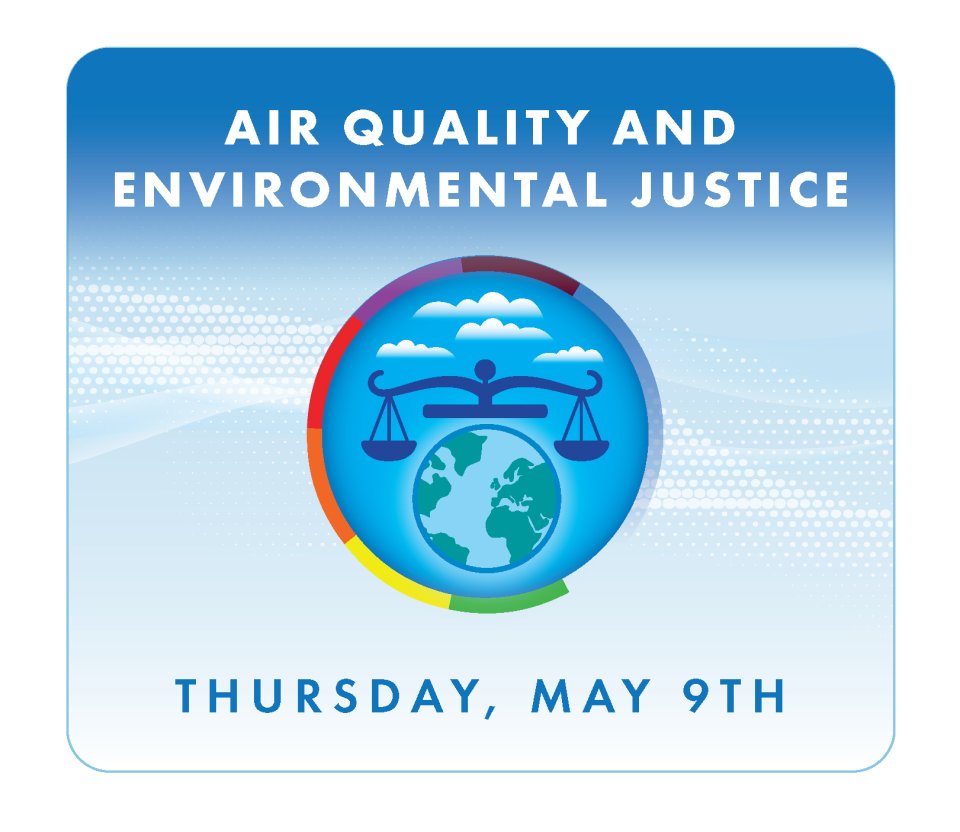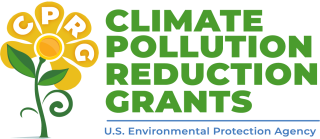Air Quality and Environmental Justice

The environmental justice movement was started by individuals who wanted to address the inequity of environmental protection within their communities. EPA is committed to delivering progress on environmental justice and civil rights. The agency is committed to ensuring that underserved and overburdened communities are at the forefront of our air quality work. EPA's Air Quality Awareness Week is the perfect time to learn more about environmental justice and the work that EPA has done, and continues to do, to further address in equity of environmental harms and risks located in communities with environmental justice concerns.
On this page:
- Air Quality and Environmental Justice Basics
- Air Quality and Environmental Justice Tools and Activities
- EPA's Work on Air Quality and Environmental Justice
- Researcher Spotlight: Dr. Cavin Ward-Caviness
Air Quality and Environmental Justice Basics
Environmental justice is the fair treatment and meaningful involvement of all people regardless of race, color, national origin, or income, Tribal affiliation, or disability with respect to the development, implementation and enforcement of environmental laws, regulations and policies.
Fair treatment means no group of people should bear a disproportionate share of the negative environmental consequences resulting from industrial, governmental and commercial operations or policies. This goal will be achieved when everyone enjoys:
- The same degree of protection from environmental and health hazards.
- Equal access to the decision-making process to have a healthy environment in which to live, learn, and work.
Meaningful involvement means:
- People have an opportunity to participate in decisions about activities that may affect their environment and/or health.
- The public's contribution can influence the regulatory agency's decision.
- Community concerns will be considered in the decision-making process.
- Decision makers will seek out and facilitate the involvement of those potentially affected.
Learn more about environmental justice and view the interactive timeline.
Test Your Knowledge
G is the correct answer.

A is the correct answer.

F is the correct answer.

Hey... No Peeking!
You need to select an answer to the question before we'll show you the right answer...
Air Quality and Environmental Justice Tools and Activities
Environmental Justice Comic Book Series

In 2022, the CUNY School of Law Center for Urban Environmental Reform (Long Island City, NY) received a Clean Air Excellence Award for Mayah's Lot, the first book in the Environmental Justice Chronicles - a series of graphic novels (including sequels Bina's Plant and Troop's Run) that tell the story of young people who organize their community to advocate for environmental justice. Students learn basic civics, advocacy strategies, some science, and the importance of community solidarity. They create their own comic books, then develop and implement an environmental justice campaign that builds change within their own community. Mayah's Lot has grown into a video and curriculum that has engaged students in classrooms across New York City, the United States, and beyond, as well as a teacher training program.
Read the Mayah's Lot graphic novel (pdf) (9 MB).
Watch the Mayah's Lot video.
Learn more about the rest of the Environmental Justice Chronicles.
What is EJScreen?
Identify areas that may have higher environmental burdens and vulnerable populations by exploring EJScreen, an environmental justice screening tool developed by EPA. EJScreen provides demographic, socioeconomic, and environmental information for specific geographic areas.
Learn more about this tool by visiting EPA's EJScreen website.
What is the Climate and Economic Justice Screening Tool?
The Climate and Economic Justice Screening Tool is an interactive map that uses datasets that help identify indicators of potential environmental burdens in eight categories: climate change, energy, health, housing, legacy pollution, transportation, water and wastewater, and workforce development.
Federal agencies will use the tool to help identify disadvantaged communities that will benefit from programs included in the Justice40 Initiative. The Justice40 Initiative seeks to deliver 40% of the overall benefits of investments in climate, clean energy, and related areas to disadvantaged communities.
Test Your Knowledge
G is the correct answer.

A is the correct answer.

F is the correct answer.

Hey... No Peeking!
You need to select an answer to the question before we'll show you the right answer...
EPA's Work on Air Quality and Environmental Justice
EPA's goal is to provide an environment where all people enjoy the same degree of protection from environmental and health hazards and equal access to the decision-making process to maintain a healthy environment for all of us to live, learn, and work in.
EPA's environmental justice mandate extends to all of the agency's work, including:
- Setting standards
- Permitting facilities
- Awarding grants
- Issuing licenses
- Regulations
- Reviewing proposed actions by the federal agencies
EPA works with all stakeholders to address environmental and public health issues and concerns constructively and collaboratively. The Office of Environmental Justice and External Civil Rights coordinates the Agency's efforts to integrate environmental justice into all policies, programs, and activities. OEJECR's mission is to support EPA's efforts to protect the environment and public health in minority, low-income, Tribal and other vulnerable communities by including environmental justice in all programs, policies and activities.
Funding Opportunities for Air Quality and Environmental Justice
Environmental and Climate Justice Community Change Grants (due Nov. 2024)
EPA's new Environmental and Climate Justice Community Change Grants program has announced a Notice of Funding Opportunity for approximately $2 billion dollars in Inflation Reduction Act funds in environmental and climate justice activities to benefit disadvantaged communities through projects that reduce pollution, increase community climate resilience, and build community capacity to address environmental and climate justice challenges. These investments will be based on community and stakeholder input and will be focused on community-driven initiatives. They are designed to deliver on the transformative potential of the Inflation Reduction Act for communities most adversely and disproportionately impacted by climate change, legacy pollution, and historical disinvestments.
Climate Pollution Reduction Grants

The Climate Pollution Reduction Grants program provides $5 billion in grants to states, local governments, Tribes, and territories to develop and implement ambitious plans for reducing greenhouse gas emissions and other harmful air pollution. This two-phase program provides $250 million for noncompetitive planning grants, and approximately $4.6 billion for competitive implementation grants.
The CRPG program provides flexible support to states, local governments, Tribes, and territories regardless of where they are in their climate planning and implementation process. Planning grant recipients are using the funding to design climate action plans that incorporate a variety of measures to reduce GHG emissions from across their economies in six key sectors (electricity generation, industry, transportation, buildings, agriculture/natural working lands, and waste management).
Justice40
In January 2021, President Biden's Executive Order 14008 - Tackling the Climate Crisis at Home and Abroad announced Justice40. Justice40 is a whole-of-government approach that mandates that at least 40% of benefits of certain federal investments must flow to disadvantaged communities. In July 2021, EPA received interim guidance to support implementation of Justice40. This guidance included six EPA programs as part of the Justice40 pilot:
- Drinking Water State Revolving Fund
- Clean Water State Revolving Fund
- Reducing Lead in Drinking Water
- Superfund
- Brownfields
- Diesel Emissions Reductions Act Program
- Since the establishment of the pilot program, EPA has expanded the number of applicable programs beyond these initial six, including programs funded by the Bipartisan Infrastructure Law that match the criteria for Justice40. EPA is focusing on these pilot and BIL-funded programs as the first phase of full Justice40 implementation.
Test Your Knowledge
G is the correct answer.

A is the correct answer.

F is the correct answer.

Hey... No Peeking!
You need to select an answer to the question before we'll show you the right answer...

